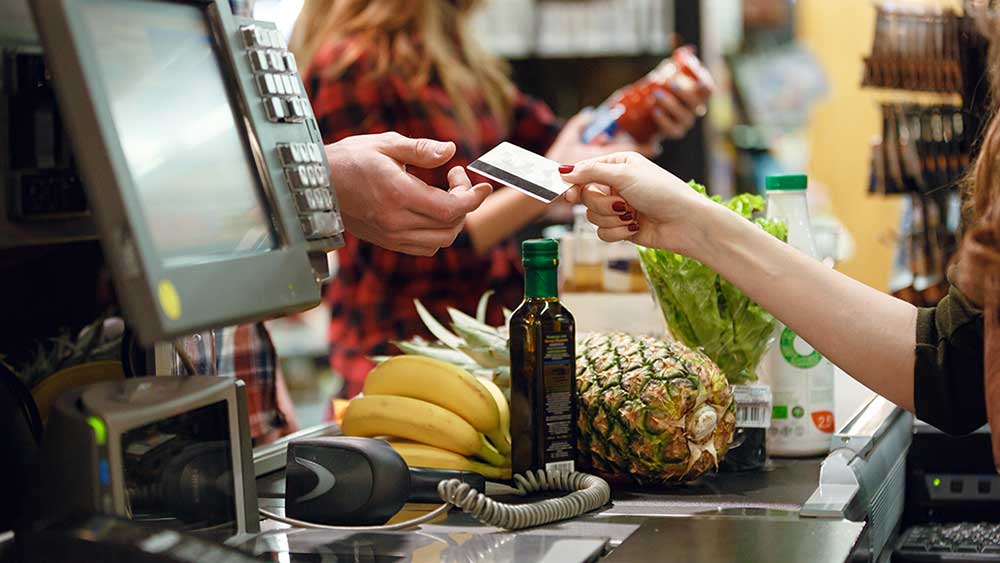[ad_1]
The CPI inflation rate finally pulled back from a 40-year peak in July, as the consumer price index came in cooler than expected. Core inflation, which strips out food and energy prices, also downshifted, lowering odds of a big Federal Reserve rate hike in September. Following the CPI report, the Dow Jones industrial average rose sharply in Wednesday stock market action.
X
The CPI inflation rate eased to 8.5%, retreating from June’s 9.1% inflation rate amid falling gas prices, retail discounting, the return of online deflation and a plunge in shipping costs. Consumer demand has downshifted while Covid supply-chain snags are being ironed out. Economists expect another tame inflation reading for August ahead of the Fed’s pivotal Sept. 20-21 meeting.
The CPI was flat from the prior month, coming after June’s 1.3% jump. The core CPI rose 0.3% from June, a big step down from June’s 0.7% increase. The annual core inflation rate held at 5.9%. March’s 6.5% core inflation rate was the highest since August 1982.
Wall Street economists expected the consumer price index to rise 0.2% in July, as the annual inflation rate eased to 8.7%. The core CPI was seen rising 0.5% on the month. The core inflation rate was expected to tick higher to 6.1% from 5.9%.
Goods Vs. Services Inflation
Inflation in goods prices, excluding food and energy, has decelerated from double-digit increases earlier in the year. Core goods prices rose 0.2% on the month, bringing the annual inflation rate down to 7% from 7.2% in June from 8.5% in May.
Inflation in nonenergy services prices, which affects 57% of consumer budgets, has yet to subside, rising 0.4% on the month and 5.5% from a year ago. The annual increase matched June’s 30-year high.
Nonenergy services inflation remained at a peak as prices for medical services rose 0.4% on the month, bringing the year-over-year increase to 5.1%.
Shelter prices rose 0.5% in July and a 30-year-high 5.7% from a year ago. That strength came as owners’ equivalent rent rose 0.6% on the month and 5.8% from a year ago. That was slightly offset by a 3.2% monthly drop in hotel and motel prices.
Other factors restraining core services inflation included a 0.5% monthly decline in transportation prices as airfares fell 7.8%. Meanwhile, education and communications services prices slipped 0.1%.
The outlook remains a concern amid the strong job market.
“Core goods inflation should also subside in the coming months given the overwhelming evidence of easing supply chain pressures,” Jefferies chief financial economist Aneta Markowska wrote in a Friday note. But she expects core services inflation to “remain sticky, supported by the tightness in housing and labor markets.”
Dow Jones, Treasury Yields Reaction To CPI Inflation Rate
The Dow Jones rose 1.6% in Wednesday stock market action. The S&P 500 added 2.1% and the Nasdaq composite 2.9%.
The Dow Jones rally had lost some steam after Friday’s strong jobs report. Financial markets began pricing in one more quarter-point rate hike to a range of 3.5%-3.75% by early next year. However, rate hike odds reversed in the wake of the CPI report. Markets now see about 40% odds of a 75-basis-point hike in September, according to CME Group’s FedWatch.
Still, even as the stock market rally gained through Wednesday’s session, the Treasury market gave up much of its early gains, as yields came off their lows after the CPI report. That suggests the report isn’t a game-changer for Fed policy.
The 10-year Treasury yield, after falling 10 basis points to 2.7% early, backed up tot 2.79%. The 2-year Treasury yield, which is more closely tied to Fed rate expectations, fell 6 basis points to 3.23%, after slipping to around 3.10% mid-morning. However, the Treasury yield curve remains inverted, with short-term rates above longer-term rates, which can be a precursor of recession.
As of Tuesday’s close, the Dow was down 10.9% from its all-time closing high on Jan. 4, but had rallied 9.7% from its mid-June closing low. The S&P 500 has fallen 14.1% from its peak close, having climbed 12.4% from its June 16 closing low. The Nasdaq has tumbled 22.2%, cutting its losses by 17.4% since mid-June.
Be sure to read IBD’s The Big Picture column after each trading day to get the latest on the prevailing stock market trend and what it means for your trading decisions.
CPI Inflation Report Details
Prices for used cars and trucks fell 0.4% on the month, and rose 6.6% from a year ago. Used car inflation has come down sharply from a peak 35.3% annual gain in March.
Demand for used cars got a boost amid the global chip shortage that snagged production for new autos. Prices for new vehicles increased 0.6% on the month, while rising 10.4% from a year ago. April’s 13.2% annual rise was the biggest yearly increase since 1949.
Energy prices fell 4.6% on the month and increased 32.9% from a year ago. The average national gasoline price has come down $1 per gallon, or 20%, since mid-June, according to AAA.
Prices for food away from home rose 0.7% in July vs. June, while rising 7.6% from a year ago. Prices for food consumed at home climbed 1.3% last month and 13.1% from a year ago.
YOU MAY ALSO LIKE:
The New Stock Buyback Tax: What It Means For Apple And The S&P 500
Best Growth Stocks To Buy And Watch
Join IBD Live And Learn Top Chart-Reading And Trading Techniques From The Pros
How To Make Money In Stocks In 3 Simple Steps
Market Rally Enters Power Trend; These EV Plays Flash Buy Signals
[ad_2]
Image and article originally from www.investors.com. Read the original article here.

